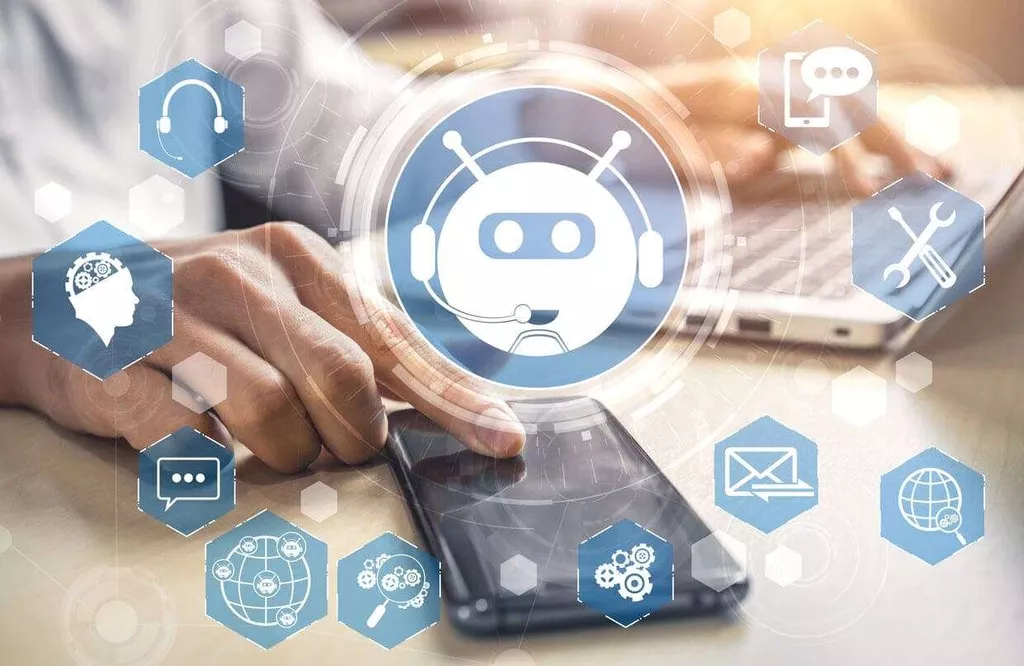Use of chatbots in healthcare benefits and risks
The healthcare sector is no stranger to emergencies, and chatbots fill a critical gap by offering 24/7 support. Their ability to provide instant responses and guidance, especially during non-working hours, is invaluable. In the near future, healthcare chatbots are expected to evolve into sophisticated companions for patients, offering real-time health monitoring and automatic aid during emergencies. Their capability to continuously track health status and promptly respond to critical situations will be a game-changer, especially for patients managing chronic illnesses or those in need of constant care. In terms of cancer diagnostics, AI-based computer vision is a function often used in chatbots that can recognize subtle patterns from images.
Though a minority, we highlight the importance of SMS-based and phone-call-based chatbots to bridge the digital divide and reach people who lack access to smartphones or reliable internet connections or lack the skills to use technology. Chatbots were designed either for the general population (35 cases) or for a specific population (17 cases). The general population audience could be as broad as the world (e.g., the WHO chatbot) or a country (e.g., the CDC chatbot in the United States). Many state or regional governments also developed their own chatbots; for instance, Spain has 9 different chatbots for different regions. At the onset of the pandemic little was known about Covid-19 and information and guidelines were in constant flux. The public had many questions and concerns regarding the virus which overwhelmed health providers and helplines.
Advantages of Healthcare Chatbots
With each answer you give the chatbot, it eliminates a couple of diagnosis options until it finally lands on the most likely ones. Afterward, the chatbot helps you decide on the next steps and choose the best follow-up variant that suits you the best, both in terms of money and convenience. In other words, they’re trying to fix the first step people take when they start feeling bad. At Kommunicate, we are envisioning a world-beating customer support solution to empower the new era of customer support. The chatbot offers website visitors several options with clear guidelines on preparing for tests such as non-fasting and fasting health checkups, how to prepare for them, what to expect with results, and more. Case in point, Navia Life Care uses an AI-enabled voice assistant for its doctors.
Their versatility and 24/7 availability make chatbots valuable tools for automating tasks, enhancing user experiences, and increasing operational efficiency. AI-powered chatbots in healthcare have a plethora of benefits for both patients and healthcare providers. Top health chatbots can enhance patient engagement, provide personalized approaches and recommendations, save time and resources for doctors, and improve the overall healthcare experience for everyone involved. We focus on a single chatbot category used in the area of self-care or that precedes contact with a nurse or doctor.
What the U.S. Executive Order on Artificial Intelligence means for your business
A study performed on Woebot, developed based on cognitive behavioral therapy, showed that depressive symptoms were significantly reduced, and participants were more receptive than in traditional therapies [41]. This agreed with the Shim results, also using the same type of therapy, which showed that the intervention was highly engaging, improved well-being, and reduced stress [82]. When another chatbot was developed based on the structured association technique counseling method, the user’s motivation was enhanced, and stress was reduced [83]. Similarly, a graph-based chatbot has been proposed to identify the mood of users through sentimental analysis and provide human-like responses to comfort patients [84]. Vivobot (HopeLab, Inc) provides cognitive and behavioral interventions to deliver positive psychology skills and promote well-being. This psychiatric counseling chatbot was effective in engaging users and reducing anxiety in young adults after cancer treatment [40].
The bot can then send follow-up messages via text, email, or even voice message to remind patients about the scheduled appointments. At the end of the day, regular people aren’t trained medically to understand the severity of their diseases. They collect basic information from patients, and then, based on the input, they provide patients with more information healthcare chatbot use cases about their conditions and suggest the next steps. Read this article to learn everything you need to know about the use of chatbots in healthcare and discover 5 insightful use cases that display their potential. While there are some challenges left to be addressed, we’re more than excited to see how the future of chatbots in healthcare unfolds.
Use cases of healthcare chatbots
They can also track the status of a customer’s order and offer ordering through social media like Facebook and Messenger. Deploying chatbots on your website, mobile app, WhatsApp, and other platforms can help different industries to streamline some of the processes. These include cross-selling, checking account balances, and even presenting quizzes to website visitors. And each of the chatbot use cases depends, first and foremost, on your business needs. In the future, we’re going to see more comprehensive chatbots solutions emerge on the market. The healthcare chatbot’s market size was valued at around $211 million as of 2022.
